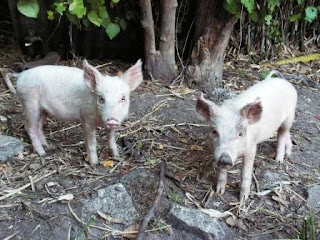Chinese Steam buns
I love steam buns!! It’s one of my comfort foods! It’s the texture of the dough that determines the quality of the bun, at least for me. I’ve been seeking for a Chinese bun dough recipe and I think I might have it now. Three other keys for making great steam buns:
1) The ingredients have to be fine (achieved by using the food processor to cut the cabbage etc
2) Mix in ¼ cold galantine (make from boiling up chicken legs) and ¾ cold filling (mince/cabbages is preferred as it holds up well)
3) Steam in a bamboo steamer
Here’s the dough recipe to make 60 small buns:
6 cups flours
¼ cup sugar
1 packet yeast
1tbs baking powder
1¼ cups warm milk
¾ cup warm water
Mix all the ingredients together, let it rise for 2 hours and the dough is ready for making buns with filling of your choice!









